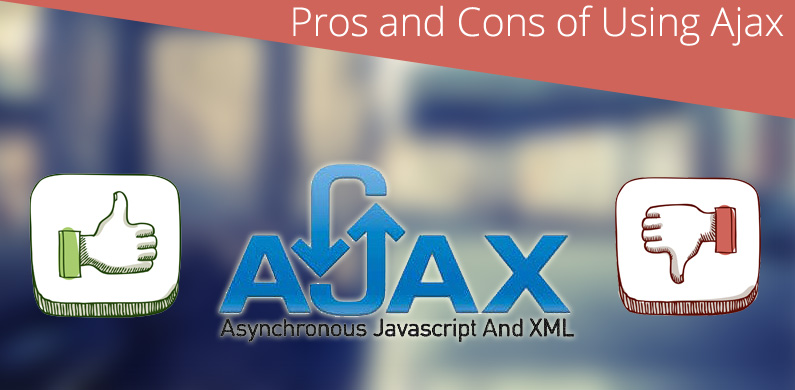Pros and Cons of AJAX
AJAX (Asynchronous JavaScript and XML) is an interactive and dynamic web application development technology that offers a rich user experience. However, like any other technology, AJAX also come with its own set of pros and cons. Read on to learn more.
Join the DZone community and get the full member experience.
Join For Free
AJAX (Asynchronous JavaScript and XML) is an interactive and dynamic web application development technology that offers a rich user experience. Complete AJAX applications provide the feel of desktop applications. Like any other technology, AJAX also comes with its own set of pros and cons. Below I've listed some important scenarios which one definitely must be aware of while using AJAX in web based application development.
Pros of Using AJAX
Improved User Experience — The enriched user experience provided by AJAX is the foremost benefit. AJAX allows webpages to update serially by exchanging a small amount of data with the server. This way it is possible to update parts of a webpage, without reloading the whole page. Classic webpages must reload the entire page and are cumbersome. AJAX increases the browser’s performance and facilitates faster browsing speed thereby providing a responsive user experience.
Enhanced User Productivity — The AJAX library provides object-oriented helper functions that dramatically increase the productivity while decreasing frustration. In addition, a well-configured ASP.NET application has its own data access layer and business layer. Finally, the “robust” ASP.NET application includes a UI layer where server side operations are performed. If you already have included these features, AJAX only needs an extra layer of AJAX-specific services and some enrichment on client features. This way the deployment cost is reduced and the productivity of the user can be enhanced. Popular websites like Amazon, Google, Yahoo, etc. also incorporate AJAX in their development.
Reduced Bandwidth Usage and Increased speed — AJAX uses client-side scripting to communicate with the web server and exchange data using JavaScript. Using AJAX, you can cut down on network load and bandwidth usage and retrieve only the data that is required to give you faster interfaces and better responsive times. Response time is faster, hence performance and speed are increased.
Increased Compatibility — AJAX can be compatible with ASP.NET, J2EE, PHP, or any languages. It almost supports all popular browsers such as Internet Explorer 5 and above, Mozilla Firefox 1.0 and above, Apple Safari 1.2 and above, Opera 7.6 and above, and RockMelt.
Supports Asynchronous Processing — Asynchronous data retrieval can be done by using XmlHttpRequest, the backbone of AJAX applications. Hence, requests are handled effectively and dynamic content loading is brought to higher heights by improving the performance considerably.
Reduced server hits and network load — Atlas, an older form of Microsoft AJAX library, is a framework that integrates the Client-side JavaScript library and is easily available and can be used with ASP.NET to develop Ajax applications. It has cross-browser support and exposes object-oriented APIs, which can be used to develop web applications that minimize server hit/network load and perform asynchronous processing.
Easier Navigation — AJAX applications can be built to allow easy transition between WebPages to the users instead of using conventional back and forward buttons on a browser.
Cons of Using AJAX
Browser Incompatibility — AJAX highly depends on JavaScript which is implemented differently for various browsers. This turns out to be a hurdle especially when AJAX has to work across many browsers. Browsers which do not support JavaScript or have the JavaScript option disabled will not be able to use its functionality. Due to the AJAX’s dependency on JavaScript, it is not suitable for designing mobile applications. The Back button of your web browser does not work as expected.
Insecurity — The webpage can be difficult to debug, increases the code size of your webpage, and makes your webpage prone to severe security threats.
Increased load on Web Server — The load can be increased depending on the user if you are adding an auto-update type that hits the server every few seconds.
Opinions expressed by DZone contributors are their own.

Comments